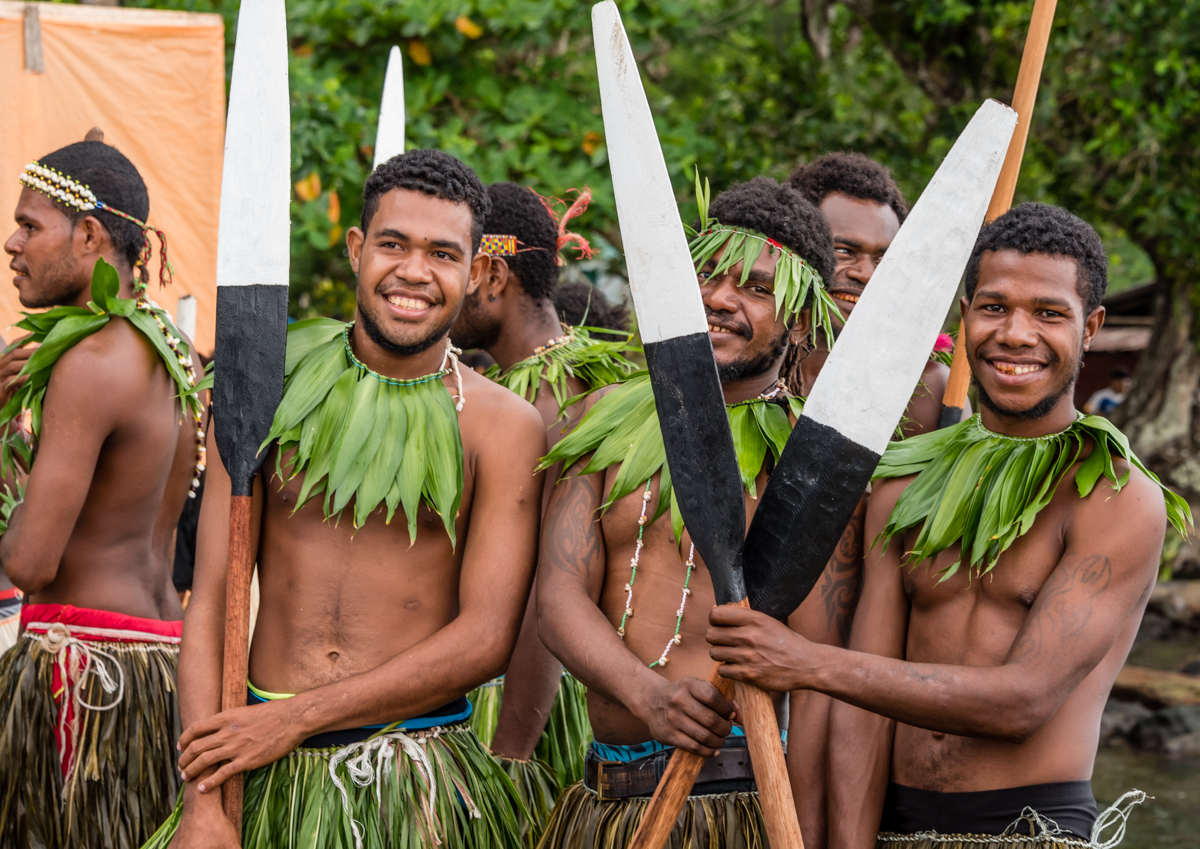
Our battlefields tour began with a visit to the Guadalcanal American Memorial atop a hill overlooking Henderson Airfield and the Solomon Sea, Guadalcanal Island, Solomon Islands
We spent a sobering morning touring some of the critical battle sites on Guadalcanal Island around Honiara, the capital of the Solomon Islands. While there have been many books and histories of the campaign and two popular movies (“Guadalcanal Diary” and “Thin Red Line”), nothing really prepares visitors for the grim reality of the six month slog by the Allied Forces (led by the Americans, but including Australians and New Zealanders and others) to defeat the Japanese army on the jungle island.
The Guadalcanal Campaign and victory by the Allied Forces marked an important turning point in World War II following the surprise attack on Pearl Harbor on 7 December 1941. In Japanese Admiral Isoroku Yamamoto’s words (he masterminded the attack), “I fear all we have done is to awaken a sleeping giant and fill him with a terrible resolve”. In February 1943 the Allied Forces emerged victorious after undertaking the first Allied land offensive of the war, which was launched on Guadalcanal in August 1942. This victory stopped the Japanese march towards Australia in the south. The Allied Forces continued on the offensive, pursuing the Japanese back to the north, through 1945 when, following the dropping of two atomic bombs on Japan, the Japanese surrendered.

Looking out at the Solomon Sea from the Guadalcanal American Memorial, Guadalcanal Island, Solomon Islands, it was easy to visualize the Japanese Navy bombarding the island (particularly Henderson Field adjacent to the sea in this photograph) – and, then, later the American Navy in these waters
The welcoming marble plinth notes: “Welcome to the Guadalcanal American Memorial. This monument is a tribute to those Americans and their Allies who participated in the Guadalcanal Campaign from 7 August 1942 to 9 February 1943. It especially honors those soldiers, sailors, marines and airmen who fought and died in the military campaign which led to the liberation of the Solomon Islands [which at the time were a British Protectorate]. This remembrance was erected through the joint efforts of the Guadalcanal-Solomon Islands War Memorial Foundation (U.S.A.) and the American Battle Monuments Commission [an agency of the United States of American government].
MAY THIS MEMORIAL ENDURE THE RAVAGES OF TIME UNTIL THE WIND, RAIN AND TROPICAL STORMS WEAR AWAY ITS FACE BUT NEVER ITS MEMORIES.”

Arrayed around the military star are four directional walls pointing to major battle sites, each inscribed with portions of the history of the Guadalcanal WW II Campaign, Guadalcanal American Memorial, Guadalcanal Island, Solomon Islands

Looking toward the mountains above Bloody Ridge (where we were standing) from which the Japanese descended on 12 September 1942 to attack the Allied Forces guarding Henderson Field, which is located between Bloody Ridge and the Solomon Sea, Guadalcanal Island, Solomon Islands

Having turned around from the previous view while on Bloody Ridge, looking at Henderson Field and the Solomon Sea, Guadalcanal Island, Solomon Islands
“The Battle of Edson’s Ridge, also known as the Battle of the Bloody Ridge, Battle of Raiders Ridge, and Battle of the Ridge, was a land battle of the Pacific campaign of World War II between Imperial Japanese Army and Allied (mainly United States Marine Corps) ground forces. It took place from 12–14 September 1942, on Guadalcalan in the Solomon Islands, and was the second of three separate major Japanese ground offensives during the Guadalcanal Campaign. In the battle, U.S. Marines, under the overall command of U.S. Major General Alexander Vandegrift, repulsed an attack by the Japanese 35th Infantry Brigade, under the command of Japanese Major General Kiyotake Kawaguchi. The Marines were defending the Lunga perimeter that guarded Henderson Field on Guadalcanal, which was captured from the Japanese by the Allies in landings on Guadalcanal on 7 August 1942. Kawaguchi’s unit was sent to Guadalcanal in response to the Allied landings with the mission of recapturing the airfield and driving the Allied forces from the island… On 15 September, [Japanese] General Hyakutake at Rabaul learned of Kawaguchi’s defeat, the Imperial Japanese Army’s first defeat involving a unit of this size in the war. The general forwarded the news to the Imperial General Headquarters in Japan. In an emergency session, the top Japanese army and navy command staffs concluded that, ‘Guadalcanal might develop into the decisive battle of the war’… the defeat at Edson’s Ridge contributed not only to Japan’s defeat in the Guadalcanal campaign, but also to Japan’s ultimate defeat throughout the South Pacific.” — Wikipedia

The small memorial on Bloody Ridge, Guadalcanal Island, Solomon Islands, with local islanders mingling with the visitors, offering war memorabilia for sale

Some of the Battle of the Bloody Ridge (12 – 14 September 1942) war memorabilia for sale by the islanders at the small memorial on Bloody Ridge, Guadalcanal Island, Solomon Islands

One of the local children at the small memorial on Bloody Ridge, Guadalcanal Island, Solomon Islands

The Allied Forces held Henderson Field, which had been partially constructed by the Japanese before its capture by the Americans on 8 August 1942, throughout the Guadalcanal Campaign; this view looks toward the mountains from which the descended to attack the Allied Forces on Bloody Ridge which was a defensive point for safeguarding Henderson Field, Guadalcanal Island, Solomon Islands; the WW II air traffic control tower (rebuilt numerous times) is in the center of the photograph

In the 1990s the Solomon Islands Memorial Garden was planted at Henderson Field — in front of what is now the domestic terminal of the Honiara (Henderson Field) Airport – as a memorial to all the members of the Allied Forces who made the supreme sacrifice in the Guadalcanal Campaign; Guadalcanal Island, Solomon Islands






























































































